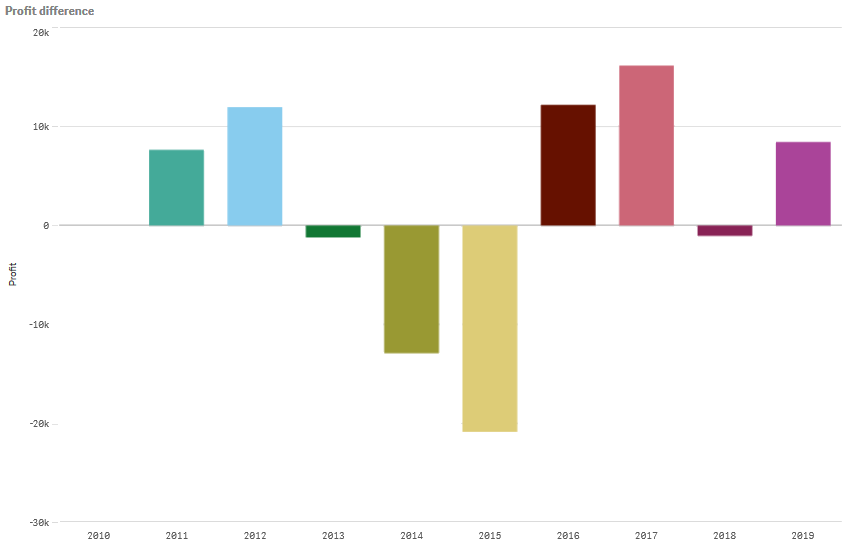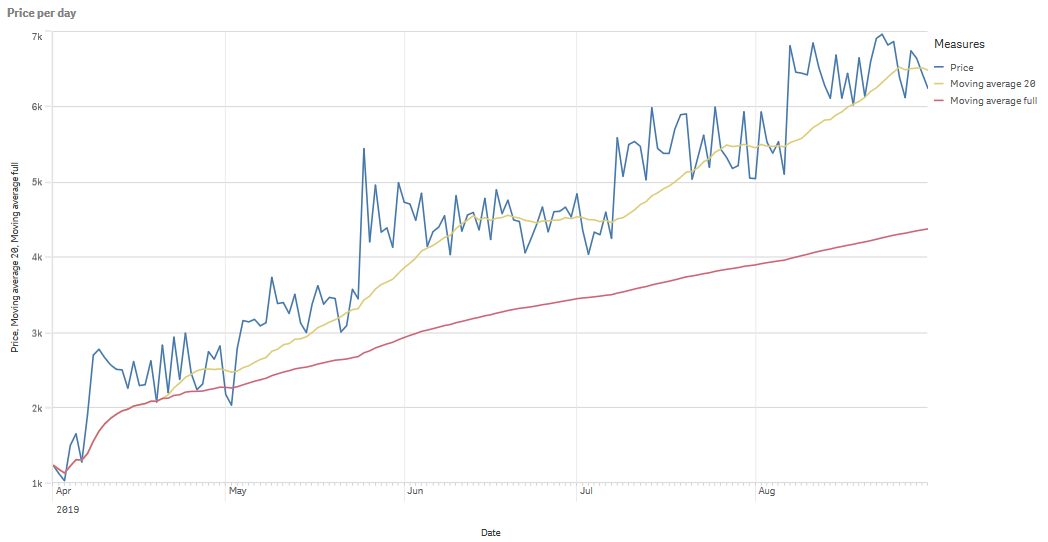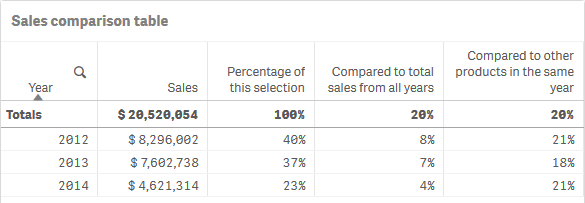Measures are calculations based on fields, for example Sum(Cost). You can use modifiers to change how the measure is calculated over the available dimensions.
For example, you can have the values of a measure accumulate over one or two dimensions, or you can calculate the average of your measure over a specific number of steps.
Which visualizations have modifiers
| Visualization | Accumulation | Difference | Moving average | Relative numbers |
|---|---|---|---|---|
| Bar chart | Yes | Yes | Yes | Yes |
| Combo chart | Yes | Yes | Yes | Yes |
| Line chart | Yes | Yes | Yes | Yes |
| Table | Yes | Yes | Yes | Yes |
Accumulation
The accumulation modifier allows you to accumulate the values of a measure over one or two dimensions. Accumulating values makes it easy to visualize how the effect of the measure builds up over a dimension.
In the following combo chart, the bars and lines accumulate over time.

Syntax:
RangeSum(Above {$M,0,Steps})
Difference
The difference modifier allows you to visualize the difference between consecutive values of a measure over one or two dimensions.The difference modifier is useful when you want to visualize the change in direction of grouped data.
In the following bar chart, any drops in yearly profits over a 10 year period appear as negative bars.

Syntax:
$M - Above($M)
Moving average
The moving average modifier allows you to see the average values of a measure over a specific period. You can use it to filter out the action from short-term value fluctuations. You can change the number of steps over which the averaging takes place, depending on how strongly you want your modifier to follow the changes in your data. A moving average is commonly used with time series data to highlight longer-term trends or cycles.
In the following line chart moving averages with two difference ranges are shown, one with a 20 step range, and one with a full range.

Syntax:
RangeAvg(Above ($M,0,Steps))
Relative numbers
The relative numbers modifier allows you to see relative percentages. You can use it to see the impact of specific selections, relative to the selection, relative to the total, or relative to other fields. You can change the basis upon which the relative number is calculated.
In the following table a column with sales of each year of a specific selection, and three columns with relative numbers are shown, one relative to current selection, one relative to total sales for all years, and one relative to the sales of each year.

The following is an example of the syntax of the modifier relative to the total selection.
Syntax:
$M / Sum( total Aggr( $M, dim ) )
